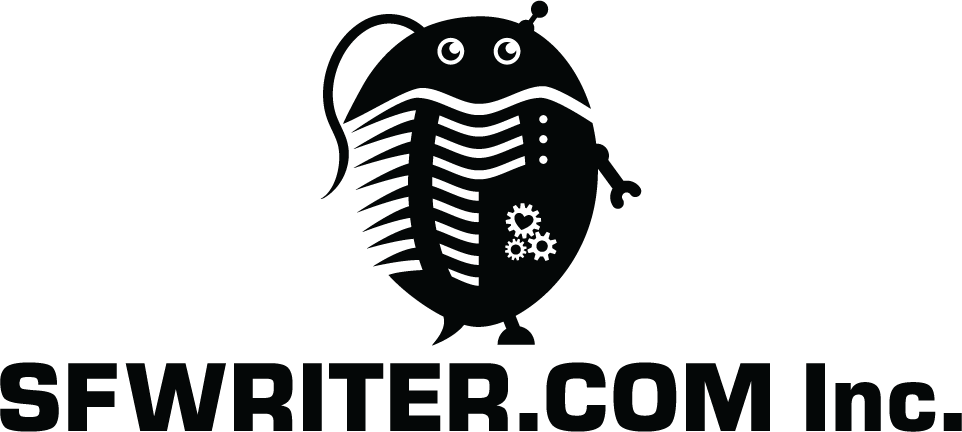![Robert J. Sawyer [Robert J. Sawyer]](rjssmhd.jpg) Science Fiction Writer
Science Fiction Writer
ROBERT J. SAWYER
Hugo and Nebula Winner
SFWRITER.COM > Futurism > Science FACTion > Devising Markers for Nuclear-Waste Sites
![[CBC Radio One]](cbcradio1.gif)
Science FACTion
Devising Markers for Nuclear-Waste Sites
Copyright © 2003 by Robert J. Sawyer
All Rights Reserved.
Nebula Award-winning science-fiction writer Robert J. Sawyer writes and presents a weekly science column for the Canadian Broadcasting Corporation's CBC Radio One.The columns, which have the umbrella title Science FACTION: Commentaries from the Cutting Edge of Science, are produced by Barbara Saxberg in Toronto, and syndicated to local CBC Radio stations across Canada.
Host: If our current civilization could leave just one message for the future, what should it be? Here's science-fiction writer Robert J. Sawyer with the surprising answer.
Music: The Time Tunnel TV theme
Robert J. Sawyer: I'm biased, of course, but I firmly believe that the best person to ask about the future is a science-fiction writer. And that's just what the United States Department of Energy did when they called upon my friend and colleague Gregory Benford to help them solve a huge ethical problem.
This was the brief Benford was given: the U.S. government recognizes that no human civilization has ever lasted more than a thousand years, but the nuclear waste produced by American reactors will still be poisonous ten thousand years from now. How can we possibly communicate to whatever civilizations might exist that far in the future that the sites where we're going to store our nuclear waste should not be broken into, farmed on, or lived near — especially when those civilizations might be nontechnological. (The U.S. Department of Energy apparently knows Einstein's famous quip that he had no idea what weapons would be used to fight the Third World War, but World War IV will be fought with spears.)
The Department of Energy has selected a site in the New Mexico desert for its planned nuclear-waste sarcophagus. Greg Benford and others were given the job of designing the markers that would identify that site for future civilizations; he describes the project in his wonderful nonfiction book Deep Time.
Benford recognized at once just how difficult this task was going to be. Ten thousand years from now, it's quite likely that no one in New Mexico — or anywhere else for that matter — will speak English, or any other current language. The trefoil symbol representing radioactivity that chills our hearts today certainly won't mean anything by then. Even the skull-and-crossbones poison symbol might have lost its significance.
Also part of the Department of Energy's consulting team was Jon Lomberg, a great Canadian astronomical artist. Lomberg had been head artist on Carl Sagan's TV series Cosmos, and he designed the Voyager record, now drifting off to the stars.
Lomberg said any sort of symbolic marker might be misconstrued. As proof, he pointed to the leaping-smear-of-a-man statue on Toronto's University Avenue that's officially known as the Airman's Memorial, but most people call "Gumby Goes to Heaven." It's an example of how, even in the lifetime of the designer, a symbolic work can have its meaning completely changed.
Still, some sort of symbolic communication will have to be used. Benford, Lomberg, and their colleagues are trying to come up with a way of conveying that deadly poison is buried here. They think pictures of people vomiting might work, as might those showing humans doubled over in pain.
But the team decided that simple signage won't be enough; the whole site should be foreboding and unappealing, so as to discourage future settlers, archeologists, and grave robbers.
Sound Effect: Whistling wind
One idea being considered is covering the dump with a large area of black concrete. The black concrete would get unbearably hot under the desert sun, so no one could walk on it, and certainly no one would build on it or be able to plant anything on it.
Another design calls for a plain of 25-metre-tall basalt spires jutting up at all angles, making the whole area look like a giant brier patch — most uninviting.
The New Mexico burial site won't be full until the year 2030, so no final decision about its markings has yet been made. But it's a sobering thought: future civilizations might do just fine without Shakespeare or the Bible or the Encyclopaedia Britannica, but the one message we must pass on to them is this: we made awful stuff, and it'll kill you if you dig it up.
Not the most poetic of legacies, is it?
I'm Robert J. Sawyer.
More Good Reading
Other "Science FACTion" commentaries for CBC Radio
"2020 Vision" scenarios for Discovery Channel Canada
Media backgrounder on Rob Sawyer
Rob's novel Calculating God, which deals with marking sites for future generations to avoid
My Very Occasional Newsletter
Copyright © 1995-2024 by Robert J. Sawyer.
